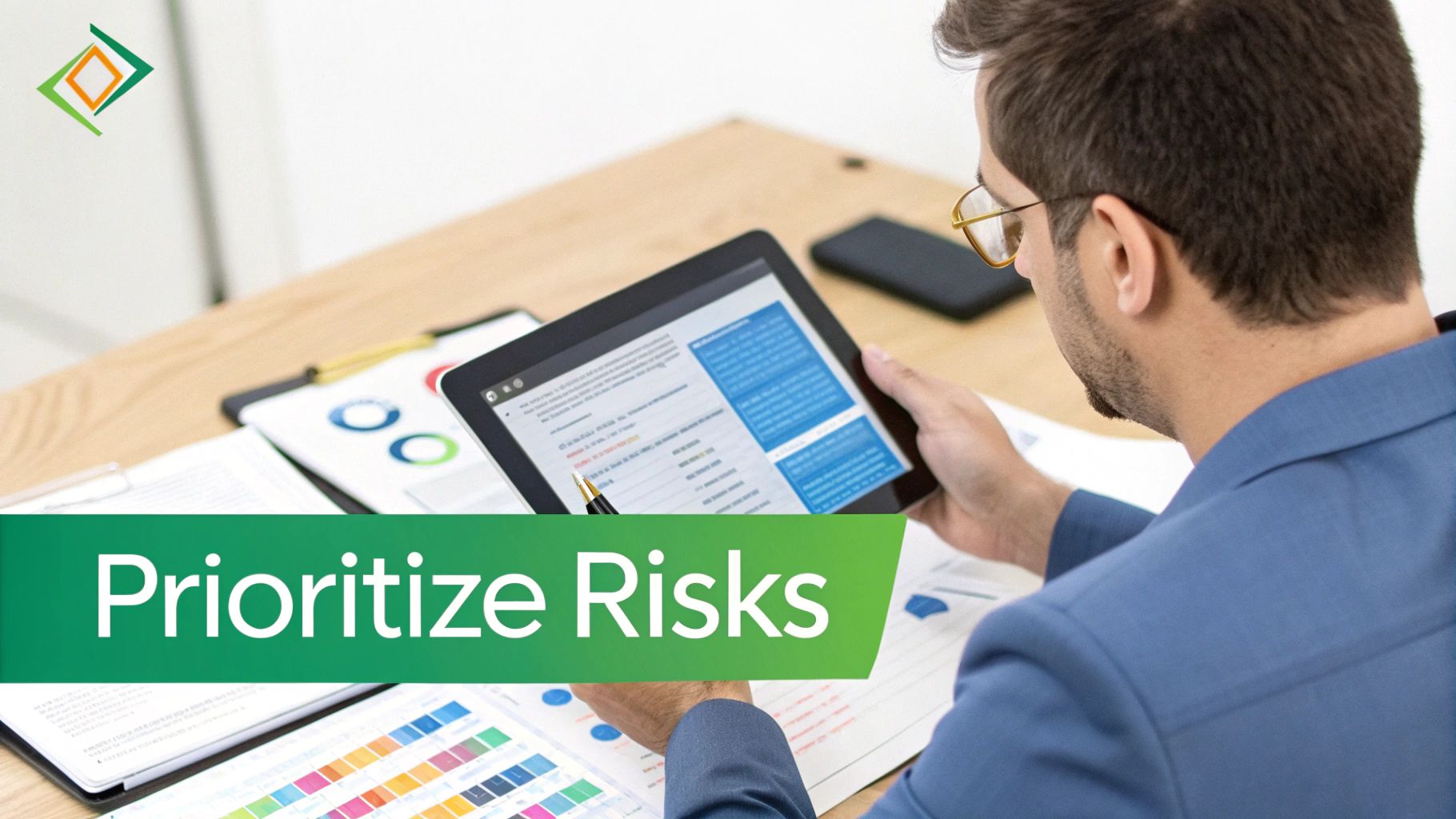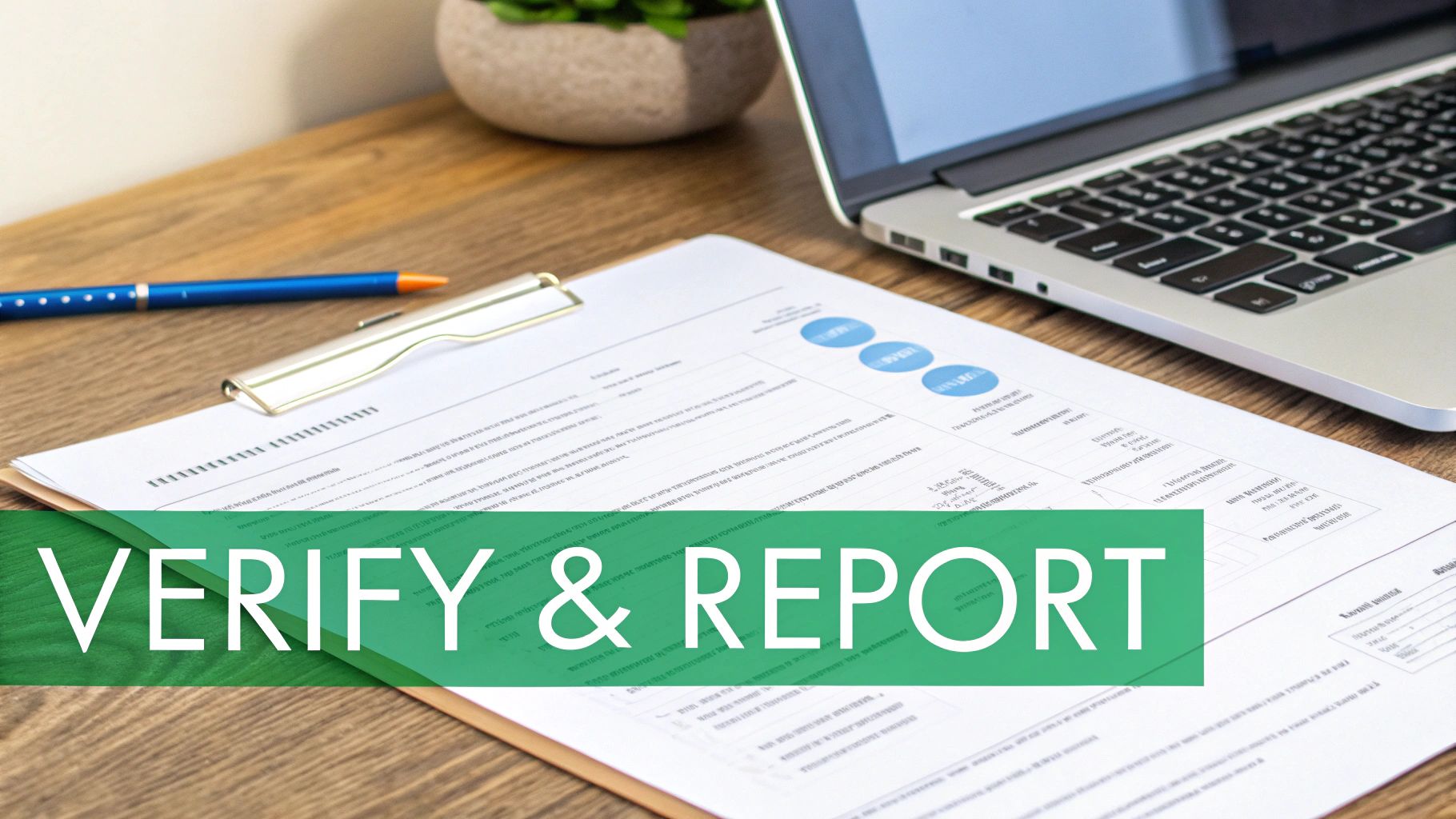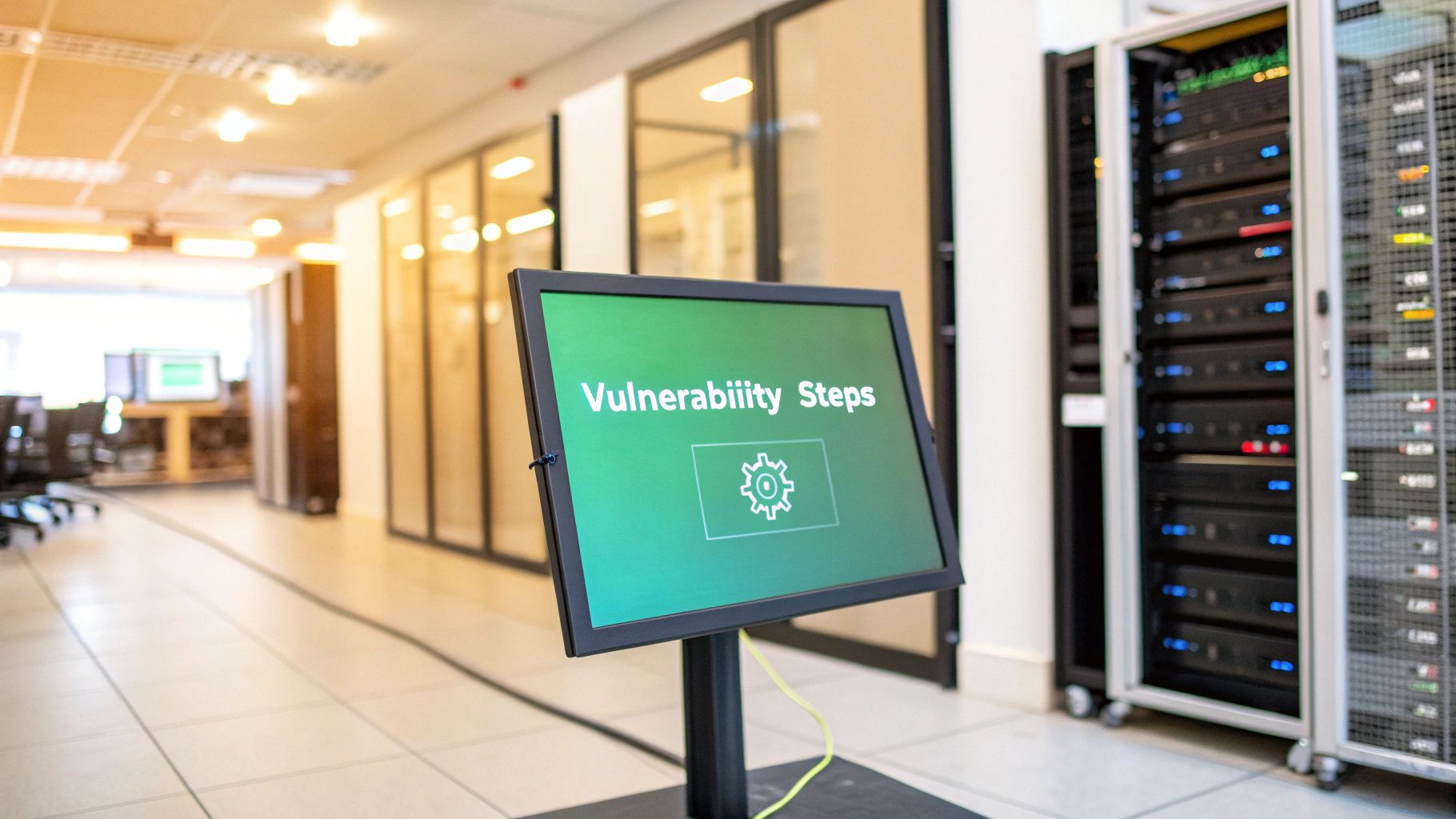Confused by vulnerability management? It's just the ongoing process of finding and fixing security weaknesses before hackers do. This guide breaks down the essential vulnerability management process steps into a simple, affordable plan.
Discover Your Assets And Find Weaknesses
You can't protect what you don't know you have. The first step is to find every device, app, and server on your network. Think of it like mapping out every window and door before installing a security system for your house.
Once you have a list of what you own, you scan it for known weaknesses. This is great for finding obvious problems, but automated scanners are noisy. They often create huge reports full of things that aren't real threats, wasting your team's time.
That's where we come in. Our certified pentesters (OSCP, CEH, CREST) manually search for the serious flaws scanners always miss. We find the business-critical risks and deliver a clear report in under a week, so you can fix what actually matters.
Prioritize Your Security Risks Effectively
After a scan, you'll have a long list of potential problems. Don't panic. The next step is to figure out which ones are actually dangerous. Your goal isn't to fix everything, just the critical few that pose a real threat.

This is where you have to think like a hacker. Ask simple questions for each finding. Can an attacker actually use this? If they did, how bad would it be? A flaw on a public website is way more important than one on a test server nobody uses.
Our affordable pentesting services do this for you. We cut through the scanner noise and give you a short, prioritized list of real, exploitable vulnerabilities. This way, you focus your limited time and money on fixing the right problems first.
Remediate Flaws Without Disrupting Operations
Now you have a short list of real threats. It's time to fix them. This is the remediation phase, where your IT team closes the security gaps you found. The key is to apply fixes without breaking important systems or causing downtime.
A clear pentest report makes this easy. Our reports give your team simple, step-by-step instructions they can use right away. This speed helps you shrink an attacker's window of opportunity fast.

Sometimes you can't apply a patch. Maybe the vendor hasn't released one, or the fix would break a critical app. In these cases, you use "compensating controls." These are smart workarounds, like adding extra monitoring or tightening firewall rules, to block attackers until a real fix is ready.
Our OSCP and CEH certified pentesters always include these practical suggestions. We give you affordable, real-world solutions to lower your risk immediately, even when a perfect patch isn't available.
Verify Fixes And Report Your Progress
Fixing a problem is great, but you have to prove it worked. The next step is verification. You must re-scan the system to make sure the vulnerability is actually gone. You can't just assume the patch worked.
This is like locking a door and then pulling the handle to make sure it's secure. For critical issues, a targeted manual re-test is the only way to be certain. That's why we offer a free retest with our pentesting services. We confirm the holes are plugged so you can be confident in your fix.
Once a fix is verified, you need to report it. This isn't about creating a huge technical document nobody reads. It's about telling a simple story to your leadership: we found this risk, we fixed it, and now we are safer. This proves the value of your security efforts.
To help, we have a guide on creating a clear pentest report template that you can use. Good reporting turns a technical task into a clear business win.
Build A Continuous Security Improvement Loop

Security isn't a one-time project. The final step is to turn this process into a continuous, repeatable routine. This means setting a regular schedule for discovering assets, scanning for flaws, fixing the important ones, and verifying the work.
Think of it like regular maintenance on a car. You don't just wait for it to break down. You perform regular check-ups to keep it running smoothly and safely. A consistent schedule turns security from a chaotic emergency into a predictable and manageable process.
So how do you know if your process is actually working? Automated scanners can confirm if a known flaw is gone. But they can't tell you if you can withstand a real attack from a clever hacker. That's where an affordable manual pentest comes in.
Our OSCP, CEH, and CREST certified pentesters act like real attackers to test your defenses. We deliver fast, affordable reports in under a week. This gives you an expert, independent check-up that proves your security process is truly effective.
Common Questions About Vulnerability Management
Here are some straight answers to common questions about the vulnerability management process steps. We get these all the time from IT managers, CISOs, and startup founders.
How Often Should We Scan For Vulnerabilities?
It depends on your business. For most companies, scanning your internet-facing systems monthly and internal systems quarterly is a good start. It's a solid rhythm that keeps you aware of new issues without creating too much noise.
If you are in a high-risk industry like healthcare or finance, you'll want to scan more often. Weekly or even continuous scanning might be needed. The goal is to find a balance that works for your team.
What Is The Difference Between A Scan And A Pentest?
This is a big one. A vulnerability scan is an automated tool that checks for a list of known problems. It's fast and catches obvious flaws, but it's very noisy and lacks context.
A penetration test is a manual attack simulation. One of our certified ethical hackers tries to break in, just like a real attacker. A pentest answers the most important question: "Can a hacker actually do damage with this?" It shows you the real-world business impact.
How Do We Handle Vulnerabilities We Can't Patch?
It's a common problem. Sometimes a patch isn't available, or it would break a critical system. When this happens, you use "compensating controls." These are temporary workarounds to reduce risk until a real fix is possible.
This could mean using a firewall to block access to the weak spot or adding more monitoring. It's like putting a security guard in front of an unlocked door until the lock can be replaced. It neutralizes the immediate threat.
At Affordable Pentesting, we deliver clear, actionable reports from certified experts in under a week. We help you focus on real threats without the high costs of traditional firms. Find out how our fast, affordable pentests can strengthen your security. Get in touch through our contact form.
.svg)
